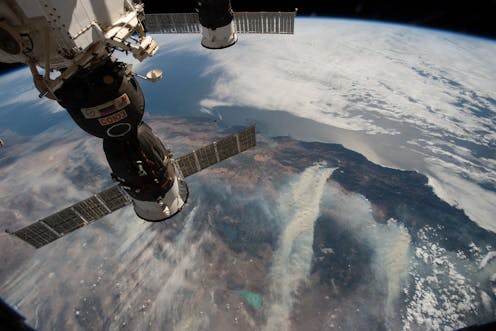Stories that made The Conversation unique in 2018
From the curious to the serious – a bird's eye view of the unique ways in which The Conversation covers the world.

Editor’s note: As we come to the end of the year, Conversation editors take a look back at the stories that – for them – exemplified 2018.
As editor-in-chief, it’s been my prerogative and privilege to have a bird’s eye view of The Conversation’s coverage this past year. So for my look back at 2018 I want not just to highlight the range of the journalism we do but also to beat the drum for our scholar-journalist partnership and the unique stories it produces.
And, with five days to go until the New Year, I do hope that you will consider a donation to support us continuing to do this important work in 2019.
Reacting to the news – California’s wildfires
Every day at The Conversation we ask how the knowledge and research of our academic contributors can help readers get beyond the headlines and understand what’s going on in the news.
As fierce wildfires raged in California, scholars wrote about the history of forest fires in the state, the links between fires and climate change as well as the work of the men and women who fight these fires. But as Richard Peletier, an air pollution scientist from UMass Amherst, pointed out, these fires affect people way beyond California – through their smoke.
“Many factors,” Peletier warned, “appear to be increasing the number and scale of wildfires. … But the biggest driver is likely to be climate change, which is making ecosystems hotter and drier. This suggests that all Americans, wherever they live, will need to become more aware of wildfires and their long-range health effects.”
Bridging the partisan divide – with evidence
As the partisanship of public debate in the U.S. becomes ever more pronounced, it’s not often that you see the same article published in both liberal and conservative media. But Conversation content – all of which is free to republish under our Creative Commons license – does sometimes find itself in that select club.
A case in point is a piece from UC San Francisco professor Margot Kushel and homelessness researcher that appeared in both the right-wing The Daily Caller and left-wing Crooks and Liars. The subject was the homelessness crisis on the West Coast and the question Kushel tackled was: “What’s to blame for such high numbers of unsheltered homeless on the West Coast?”
“The reason,” she explained drawing on her own research and that of others, “isn’t drug use, mental health problems or weather. Rather, it is due to the extreme shortage of affordable housing.”
Scholars are human too
Behind every research topic there’s a story of why this particular person asked this particular question at this particular time.
In his article on why criminal records should not be used to keep people out of college, Stanley Andrisse of Howard and Johns Hopkins universities pointed to his life as “a testament to the fact that today’s incarcerated person could become tomorrow’s professor. A person who once sold illegal drugs on the street could become tomorrow’s medical doctor. But this can only happen if such a person, and the many others in similar situations, are given the chance.”
And Georgia State’s Sarah Cook, a leading scholar of violence against women, described how she herself was assaulted in the middle of her doctoral studies. “Then, and many times later,” she wrote, “I vowed to continue my research. If I changed focus, the man who tried to kill me would have silenced me. I persisted despite concerns I would be perceived as unobjective.” In fact, it’s the #MeToo movement – and the impact it has had on her – that is causing Cook to leave behind the study of sexual assault nearly 30 years later.
Did you know that … ?
Many Conversation articles fall into a category of what can only be described as cool facts and ideas. Why do you smell rain? Why do paper cuts hurt so much? And for a thought-provoking view of why “A Quiet Place” was so popular with moviegoers, Penn State’s Matthew Jordan looked at humankind’s long history of battling noise and discovered, as he put it, “something of a paradox: The more time and money people spend trying to keep unwanted sound out, the more sensitive to it they become.”
The power of numbers
And finally, in a tribute to the sheer powerhouse of knowledge and insight that is American academia, here’s a shout-out to our many series across 2018 – from sleep and dieting to the 2018 midterms and plastics.
These are opportunities for our newsroom to work across desks and pull together complementary stories on a single topic. Collaboration is at the heart of The Conversation and that collaboration was on clear display Oct. 22 when as a team we unpacked what climate change means for the U.S. with a special day of interdisciplinary coverage — from warming being the “new normal” in Alaska to how climate science is taught (or not) in high school, based on the research of scholars from 11 universities.
As I hope you will agree, only at The Conversation!
Read These Next
Cuba’s leaders just lost an ally in Maduro − if starved of Venezuelan oil, they may also lose what r
Conditions on the ground in Cuba are so grim that the Trump administration thinks Havana could fall…
Congress takes up health care again − and impatient voters shouldn’t hold their breath for a cure
Why does health care reform keep failing despite decades of attention and expanding costs? A scholar…
Why 2026 could see the end of the Farm Bill era of American agriculture policy
Farm bills – famously complex legislative and spending balances between farm subsidies, food assistance,…






